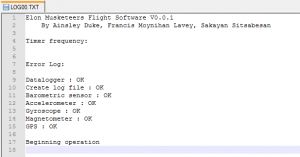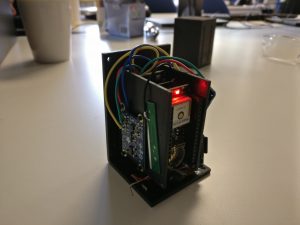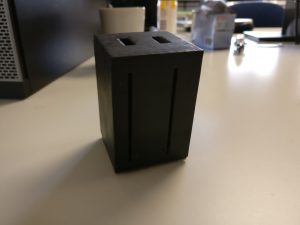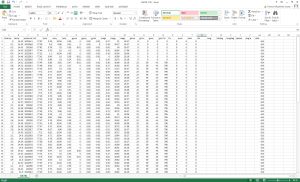It’s time. For preliminary assembly.
Turns out our casing design works pretty well, everything fits (after a bit of sanding) and a few minutes of soldering later, we had it lighting up:
Putting the outer casing on (not fully yet, some modifications are needed before it’ll all Actually fit), we left the newly born P-Sat on the table for about 10 seconds to initialize and gather some test data.
The log file on the SD card would tell us if we’d made any mistakes or damaged anything during assembly. Turns out, we hadn’t; everything was OK.

Everything worked. Perfectly. First time. Didn’t have to re-solder anything. We’re awesome. We can do no wrong. We are also very humble.
Except the timer frequency line. Ignore that.
Now lets look at that test data to see if it looks reasonable!
Looks pretty reasonable? Here’s a brief look into some things we noticed:
- Our acceleration data seems a bit off… how could we have 10.04m/s2 just sitting on the desk… unless we’re somehow affecting gravity. No, more likely, our accelerometer needs to be calibrated.
- Every 10 readings, the value of gsec (the seconds value of the GPS timestamp) increases by 1. This verifies somewhat that we are actually sampling 10 times per second (which is good, because we want that)
- Our altitude readings are a little bit low. We haven’t calibrated to the pressure of today though.
Graphs are cool so have a graph:
Those are the accelerations in each of the different axes, they kinda make sense, the thing was sitting upright so it was measuring the force of the table underneath it resisting gravity, and not much else. At the end, you see the results of someone unplugging the battery.
We hope you enjoyed this thrilling and in depth piece of data analysis!
Now that it works, it’s tweaking and testing time… Stay tuned!





